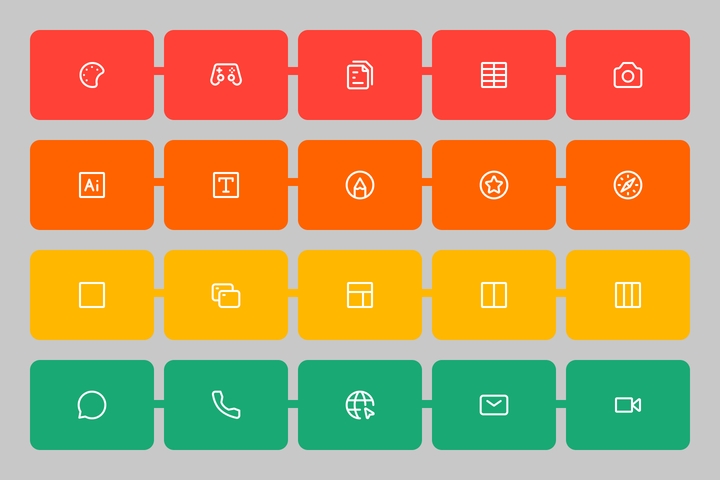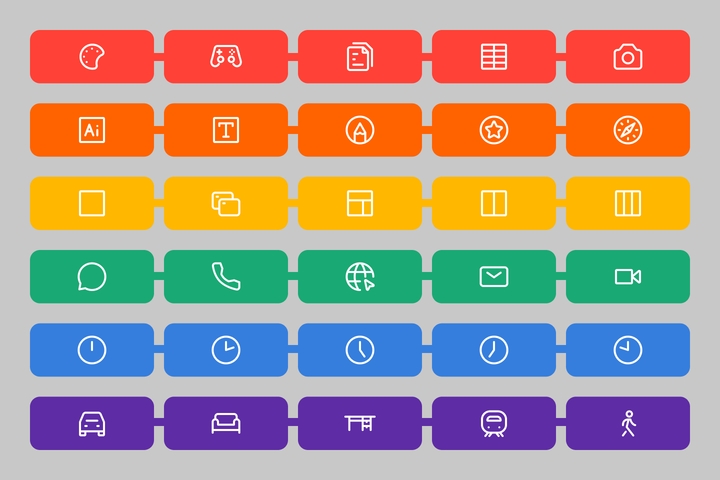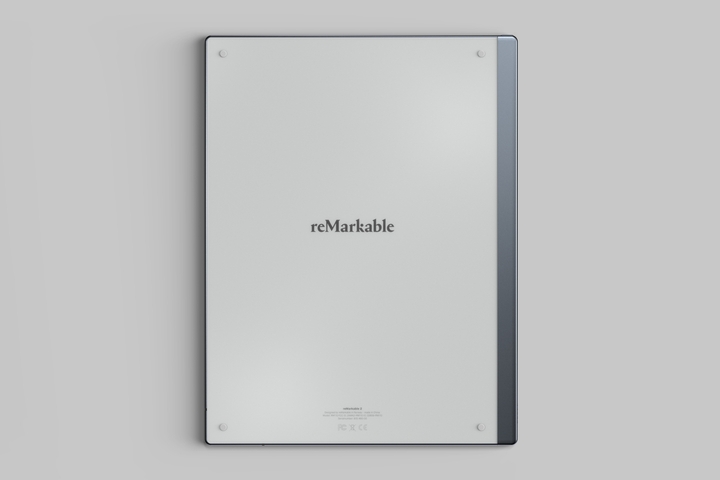

We live in a time in which computers have become incredibly powerful and ubiquitous. The computing power in each of our pockets exceeds what entire countries had decades ago. However, computers have transformed into a burden.
My professional pursuits and social life revolve around computers and the internet. On my computer, I find myself these days spending just as much time working as I do falling prey to urges and distractions. I understand the leverage afforded by the computer. Yet, I struggle with aligning my daily computer usage to my long term goals. I don’t seem to be alone.
We crave tools that provide for a healthier way of working.
How has it come to be like this?
Six User Context Questions through history
Looking through the history of computing, there is an unsettling trend. As the power and versatility of computing available to the user has improved, so too has the burden on the user to design their computing experience.
I’ll walk you through an abbreviated history of computing. Notice how each new development leads to new questions that the user must ask when using a computer. Let’s call these the Six User Context Questions.
- “What do I plan to do with this computer?”
- “Which applications should I use?”
- ”How may I best arrange my workspace and workflow?”
- ”How should I collaborate with others?”
- ”When will I use this computer?”
- ”Where will I use it?”
Electro-mechanical machines
Before computers, there were complex electro-mechanical machines. One example, the Jacquard machine of the early 19th century, created textiles according to patterns defined on punchcards.
The Jacquard machine brought efficiency and accuracy to a normally manual process. Its fundamental limitation was that it had only a single use.
The device didn’t ask anything of the user aside from the specifics of the task at hand, like the pattern.
General-purpose computing
In the early 19th century, Charles Babbage conceptualized the Analytical Engine, the first idea of a digital general-purpose computer. Though Babbage never got to see his computer built, his ideas influenced later developments.
The first true general-purpose digital computer was ENIAC from 1946. ENIAC and similar research projects gave birth to the commercial computer industry.
Unlike earlier single-purpose machines, these machines required not just data, but programs as input. They were best suited to complex calculations.
When sitting down at a general-purpose computer, the user needs to ask themselves a key question:
- “What do I plan to do with this computer?”

Personal computing
By the 1960s, people began to see in computers the potential to augment human intelligence. Douglas Engelbart wrote about computers “augmenting human intellect” by “increasing the capability of a man to approach a complex problem situation, to gain comprehension to suit his particular needs, and to derive solutions to problems”. Engelbart went on to devise novel computer interfaces in an effort to make computers more accessible and useful.
Steve Jobs would later describe the computer as a “bicycle for our minds”. His company, Apple, would make the first modern personal computer, the Macintosh. Its mouse and graphical user interface made computing accessible to all.
The personal computer sparked the software application development revolution that continues to today. Users could easily install and use programs (including games) created not just by the computer manufacturer, but also third-party developers.
When sitting at a personal computer, the user now needs to answer several questions:
- “What do I plan to do with this computer?”
- ”Which applications should I use?”
- ”How may I best arrange my workspace and workflow?”

Networked computing
Computer networking started in 1969 with ARPANET, a defense communication network during the cold war. Development continued with further breakthroughs like TCP/IP. Early networking technology formed the foundation for the World Wide Web.
Networked computing, particularly the internet, transformed computing from a solitary activity into a collective activity. It brought forth communication in the form of email, then instant messaging, and finally social networking. Networking enabled e-commerce, which has been gradually replacing traditional brick-and-mortar shopping. It also brought new forms of distractions as the internet filled with nearly endless user-generated content.
Networking yet again increased the questions a user needs to answer when sitting down at their computer:
- “What do I plan to do with this computer?”
- “Which applications should I use?”
- ”How may I best arrange my workspace and workflow?”
- ”How should I collaborate with others?”

Ubiquitous computing
During the 90s, personal digital assistants validated computer users’ thirst to carry their computers in their pockets. 3G cellular networks brought usable networking to handhelds. It wasn’t till 4G, that mobile internet rivaled wired broadband speeds.
The touch-based interface pioneered by the iPhone opened smartphones to consumers the way the mouse and keyboard did for personal computers. The smartphone absorbed the jobs of specialized devices like music players, satellite navigation devices, and television. The simultaneous development of cloud services enabled never-before-seen experiences like ride-hailing.
Ubiquity adds two more questions.
- “What do I plan to do with this computer?”
- “Which applications should I use?”
- ”How may I best arrange my workspace and workflow?”
- ”How should I collaborate with others?”
- ”When will I use this computer?”
- ”Where will I use it?”

The path taken
Over time, a wider horizon of possibility has emerged through the removal of constraints. Yet, users have more questions to answer when designing their computing experience.
This path that computing has taken is neither predictable nor preordained. Visionaries like Doug Engelbart or Steve Jobs can have a strong vision, but cannot control how people ultimately use technology.
Instead, technology is affected by many different forces, including one of the most critical forces, us users. Kevin Kelly called this phenomenon the “technium” in What Technology Wants.
“The technium extends beyond shiny hardware to include culture, art, social institutions, and intellectual creations of all types. It includes intangibles like software, law, and philosophical concepts. And most important, it includes the generative impulses of our inventions to encourage more tool making, more technology invention, and more self-enhancing connections.”
One important force is the pattern of users reflecting on their technology usage and adjusting it.
Craving healthier tools
Today, many people question how modern computers benefit us. The jury is out on whether digital distractions may be harming labor productivity. Increasingly, people are worried about technology addiction. Some have gone as far as declaring smartphones weapons of mass manipulation. Most people have mixed feelings, finding that computers both enhance and impair their lives in different ways.
We could simply avoid computing altogether, but that isn’t practical. Computing has deeply integrated into every aspect of human life. Many aspects of society assume owning a smartphone or access to a computer. Knowledge work cannot be performed without modern software.
The blame for our discontent can be placed on how unopinionated computers have become. It is too easy to sit down thinking we will get some work done, to instead find ourselves swimming in endless entertainment.
Hence, we crave technology that limits us to do the things we actually want in the long term.
Types of interventions
More limited, focused ways of using technology can be put in two categories: ongoing interventions and upfront interventions.
Ongoing interventions
Ongoing interventions involve answering the third question, “How may I best arrange my workspace and workflow?” in a way that limits the answers to the others.
For example, some people switch their devices to airplane mode in order to prevent messages and other notifications from interrupting their work. Other people delete social media apps from their devices, making it harder for them to impulsively turn to social media. Some people find success in switching their devices to greyscale, decreasing the allure of distractions.
Tim Wu suggested that computers lock into different modes like “chore mode” or “concentrated work mode”. Eight years after Tim’s suggestion, Apple introduced Focus, their take on the idea.
Some people make a single consequential decision and stand by it. For example, computer scientist and writer Cal Newport, quit social media altogether. He made not using social media part of his identity to combat its ill effects. With his choice, Cal has dramatically limited what he can do with his computers.
A major downside with ongoing interventions is that they can be easily reversed. For example, a user that removed a social media app, can in a few taps, add it back.
Upfront interventions
Upfront interventions can be more viable in the long term. They involve a single choice, such as buying a device with hardware limitations, that irreversibly answers some of the Six User Context Questions for its user.
The Kindle and other paper-like readers are the perfect example. They can be used nearly anywhere and can fit countless books inside. Yet, their slow screens and processors render them unusable for common distractions like games and social media.
The future of healthier computing
It is in the realm of upfront interventions that new opportunities and solutions have appeared. Developers are cherrypicking which of the Six User Context Questions they answer for the user, and which they leave open. They are crafting technology designed to improve users’ experiences by closing off the paths to distraction and opening up paths to healthy computing.
Light Phone is a response to the anything anywhere model of modern smartphones. It is small and light, with a monochrome screen and limited software. It comes with an alarm, calculator, directions, music player, notes/voice memo, calendar, podcasts, and hotspot tethering. That’s it.
Save for the last two user context questions, ”when will I use this computer?”, and ”where will I use it?”, it has strong, limited answers. The result is a phone that you can carry everywhere, but will rarely feel addicted to or controlled by.

reMarkable is yet another portable device with strong answers for the first four user context questions. It offers a paper-like reading and writing experience, coupled to a modern productivity workflow. Think of it as a Kindle with note-taking abilities. Its monochrome display and lack of distracting apps encourage a healthy, productive relationship. It doesn’t support third-party apps, but does integrate with Google Drive, Dropbox and OneDrive.

The Daylight Tablet, which I have been using for the last month, takes this idea even further. Its monochrome display runs at 60hz without any ghosting. Given that it runs Android, I can run all my favorite productivity software on it. For me, it is the perfect combination of versatility and constraint.
If you want to learn more, read my post dedicated to the Daylight Tablet.

Thanks to Q for reading drafts of this.
Header image inspired by Benjamin den Boer’s work on Cactus for Mac. The Mac photograph is from Hartmut Esslinger’s work at Frog design.